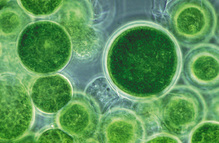Start at Home to Keep the Lake Healthy
The lake was closed to swimming during summer 2012 (i.e.at end of July) due to elevated levels of blue-green algae. With the early closing comes questions like “what caused the algae bloom?” and “is there something that can be done to help the situation?” This article provides easy practical methods you can use to minimize your own impact on the lake and neighboring bodies of water.
Did you know that when rain falls or snow melts, the seemingly negligible amounts of chemicals and other pollutants around your home and yard can be carried via storm drains to Crystal Lake or are absorbed by the soil and eventually reach the lake? (If you don’t live directly in the Crystal Lake watershed, your storm water still contributes to the Charles River watershed.) The ramifications can include polluted water and endangered wildlife. So what can you do to help protect surface and ground waters from reaching the lake? You can start at home. The following are some specific tips to help you become part of the solution to the problem: · |
Blue-green algae
|
- Consider creating a rain garden in your yard, which absorbs rain and stormwater runoff before it reaches the storm drainsand lake. The Massachusetts Watershed Coalition has provided the Conservancy a Guide to Creating Rain Gardens which includes simple tips and instructions.
- Use a professional lawn care service that employs trained technicians and follows practices designed to minimize the use of fertilizers and pesticides or consider one that uses natural alternatives to chemical fertilizers and pesticides. If you must use chemicals, have your soil tested to determine the right amount.
- Compost your yard trimmings. Compost is a valuable soil conditioner that gradually releases nutrients to your lawn and garden. (Using compost will also decrease the area of fertilizer you need to apply.) In addition, compost retains moisture in the soil and thus helps you conserve water.
- Spread mulch on bare ground to help prevent erosion and runoff.
- Keep storm gutters and drains clean of leaves and yard trimmings. (Decomposing vegetative matter leaches nutrients and can clog storm systems and result in flooding.)
- Do not over-water your lawn or garden. Over-watering can increase leaching of fertilizers to ground water.
- When your lawn or garden needs watering, use slow-watering techniques such as trickle irrigation or soaker hoses. (Such devices reduce runoff and are 20 percent more effective than sprinklers.)
- Limit the amount of impenetrable surfaces in your landscape. Use permeable paving surfaces such as wood decks, bricks, and concrete lattice to let water soak into the ground.
- Allow thick vegetation or buffer strips to grow along waterways to slow runoff and soak up pollutants. Plant trees, shrubs, and ground cover. They will absorb up to 14 times more rainwater than a grass lawn and don't require fertilizer.
- Don't hose down driveways or sidewalks. Dry sweeping paved areas, along with careful trash disposal, are simple, effective pollution reducers.
- Gutters and down spouts should drain onto vegetated or gravel- filled seepage areas -not directly onto paved surfaces. Splash blocks also help reduce erosion.
- Divert runoff from pavement to grassy, planted or wooded areas of your property, so storm water can seep slowly into the ground.
- Properly dispose of household hazardous wastes. Never pour unwanted household chemicals on the ground. Soil cannot purify most chemicals, and they could eventually contaminate runoff.
| mwc_rain_garden_guide.pdf | |
| File Size: | 825 kb |
| File Type: | |

